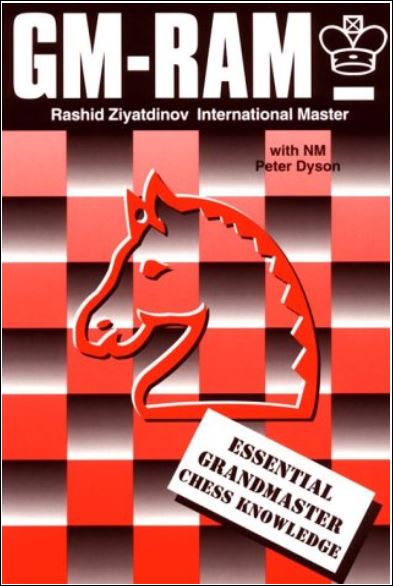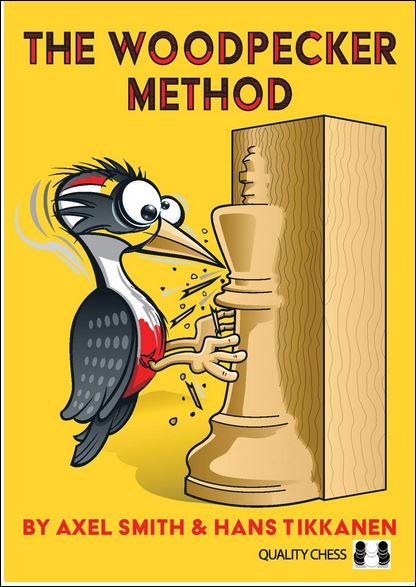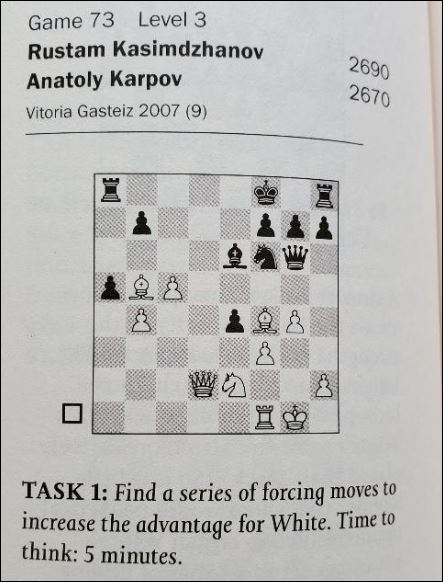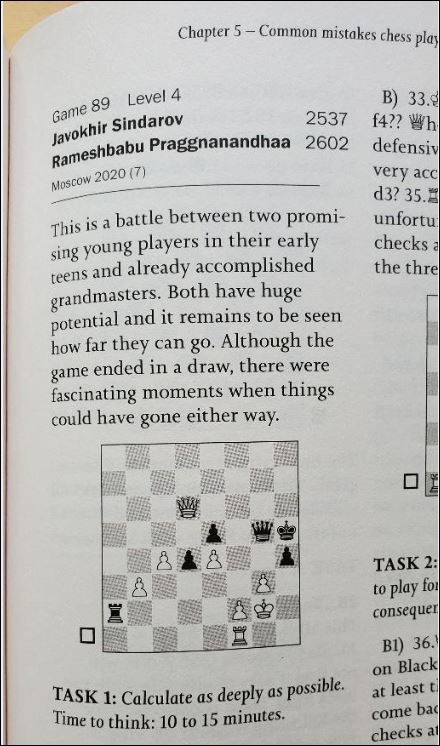One of the myths of the chess world is that knowing by heart a series of games, like in Ziyatdinov work,

or a series of chess positions like one of Caruana’s trainers mentioned,

will bring us to master level. We also have the myth that by doing over and over some positions we will reach GM level.

“Myth” like “theory” is a loaded word, since the average layman doesn’t really know much about it, and just consider a theory something unproven and a myth a kind of fable for adults. Yet many billion of people do believe in myths (See Christianity, Islam, Judaism etc and these myths give meaning to their lives as well as other benefits), and theories like the one of relativity which give us atomic energy and satellites, with which we communicate using phones or move like with GPS.
Here we have a book which is written by a mythical trainer, because he has created, through his training regimens, multiple top Indian players, using a set of mythical positions purposefully created to challenge any player to go deeper and deeper, in a journey of self-discovery, which in turn will give the reward of pinpointing many of the weaknesses in one’s own analytical skills.
If these positions delivers such promise, the book’s worth is clearly in the hundred of dollars range. After all where can we find a tool which can help us as chess players to assess our weaknesses? How much would cost to hire a GM-coach to achieve the same result? But honestly especially for adults, I do have time to read a book from time to time, but not enough time for consistent training, in the last 3 days, I worked for over 40 hours, making the federal government quite happy!
However, for me G.B. Ramesh is very important as teacher, because I believe he is of the generation of players who didn’t have computers which told them what the next good move was, he is one of the players who actually had to learn chess, like the Fischer, Spassky and older generations had. With the limited resources he had (he didn’t have the thousand of books I have ordered over the years with a click on Amazon), surely in that time he didn’t have access to the latest tournament games every Monday (like I have with Chessbase Magazine!), he had to use limited resources to discover the truth about chess and implement it in his games.
Now let’s come to the book, because there are always things which are interesting to discuss. The author has divided the positions in 5 levels:

This is an example of level 1:

I admit I didn’t pay attention to the level, but I saw the name of the players, and I began to think it would have been difficult to solve.
However a quick glance at the position and I immediately understood what I needed to do. Once more chess improvement is based and connected in my opinion to find answers to questions we ask ourselves.
Here I thought: if I could play Bd4, then I could give checkmate, BUT Black doesn’t want to collaborate and let me checkmate him, so he would play Rxd4, and I have a problem, since I’m not sure I can win… yet the next question which popped in my mind was: “How do I distract the Rd8 so that it cannot take on D4?” The answer was immediately Rc8! Winning the game.
Now comes the funny part, what I saw in less than 30 seconds glancing at a diagram on a book, wasn’t found over the board by the one who I consider the best player of all times: Magnus Carlsen. (Fischer is the one I consider the best, but words cannot easily describe the level of excellence Carlsen has achieved, and the pleasure I receive by watching some of his bullet games, and see how deep he went with just 60 seconds!!)
Magnus loves chess, he plays from when he was 9, and he must have played more than 50000 games online and in tournaments, as simuls and blindfold etc. He is clearly a chess superman. Yet he missed something so simple as Rc8, that Coach Ramesh considers a level 1, a position he considers good for someone with a rating from 1200 to 1600. Now why am I going at length over something which seems trivial? Because often in other books we find positions played in games between 2700, and obviously one asks: but if I am able to find the right move, why am I not a 2700 too?
Apart these ruminations and skeptical questions, let’s return to review the book’s content.
Chapter 1 is about Static and dynamic positions. The author mentions a passage by another mythical trainer Iossif Dorfman in a book which is very difficult to find nowadays.

This book is great, but surely a chess player wants to know why he/she should spend their hard earned money on it. I will add for each chapter an image of an exercise given in it.

The book continues with chapter 2, which will spark interest in many chess coaches, because it’s titled: Calculation training with students.
Chapter 3 is about the analytical process. Botvinnik wrote: Chess is the art of analysis, and this is what distinguishes a player from another, the way they analyze a position and find the truth. The chapter shows a lot of wisdom Ramesh has accumulated over the years.
This is an example of a drill Ramesh found instructive:

Chapter 4 discusses forcing moves. Ramesh adds a category to forcing moves which I didn’t think of before, and just this idea makes the book worth of buying it! It also shows the difference between a GM and a club player like me. Over the years I found this difference in many GM books, it’s the way they have deepened their understanding of each piece and also of some concepts which we encounter when playing a tournament. Here a task to solve from chapter 4.

Chapter 5 is definitely interesting for all chess players, because it’s titled: “ Common mistakes chess players make while calculating variations.” The material in this chapter could come from one’s own games, especially when few dozen tournaments have been played.
Here an example of one of the tasks Ramesh asks to solve:

Chapter 6 is all about the latest chess fashion: “improving calculation through solving studies”
Why do I say this is the latest fashion? Because I’ve seen it advertised over and over by different authors, in interviews, articles etc. The truth is: one of the chess players I crossed swords with over and over became master ( a rating of 2200 in US) just playing religiously every weekend tournament he could find, and reviewing his results with an engine to see where he made mistakes. He also played online endless blitz games, and I’m talking something like 10-12 hours in a row without stopping. He never opened a chess book or solved studies. However I do love studies, because it’s interesting to see how the pieces are on certain squares for some reasons…

But the chapter is important, because some endgame maneuvers can save us when we are losing, and I did learn some of them trying to solve studies, so I do think this chapter will be useful to every chess player.
Chapter 7 is the chapter one would want to read first: “chess improvement suggestions from a coach” This is a very important chapter, also if a short one, Ramesh shares his wisdom regarding training and learning.
The book ends with an index of names, a bibliography, and explanation of symbols.
Pro and Con: The book is extremely well done. Maybe at the end of each chapter there could be an exam with 30-50 positions to test the student understanding.
In the chapters the author gives under a diagram a task, but the solution is too near, and I see it right away. Ramesh does say to cover it with something opaque.

As chess player I would have preferred to see the solution a page later. However, this book can be used by a coach to give positions to students.
The book is written by a top trainer, the synthesis he makes of chess knowledge makes the book immensely valuable, one should read it cover to cover, just to absorb as a sponge chess knowledge, then one can watch some games, and see in action all the ideas learned by Ramesh.
The diagrams don’t have letters and numbers on the side, to some this can be a problem, but likely the book is aimed at an advanced audience, who doesn’t need them. While New in Chess has created some new chess books in which the diagram is oriented from Black’s side, when one needs to solve the position or a repertoire, this one is only oriented from White’s side.
One last thing which I consider a pro, a reason to have this book. In a world where we are addicted to using only our eyes, through watching screens all day long, the touching a book, the smelling of the pages, different books like different people have different smells, the touching of a chess board… this engaging all our senses, instead of the computer or phone screen, is in my opinion highly valuable.
Final thoughts: Personally I believe this review cannot really describe how good Ramesh’s work is. But in today’s world, when most people lose interest after reading 240 character, to write four pages reviewing a good book can be considered too much. On the cover of the book we see: “The Ramesh chess course #1” I’m really curious to see the other tomes of this course, and I hope they will be published soon. Meanwhile let’s enjoy and digest this 320+ pages of chess wisdom!
